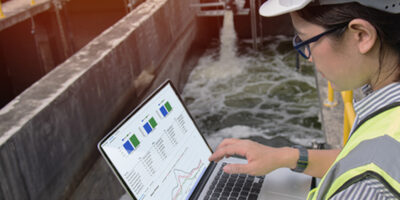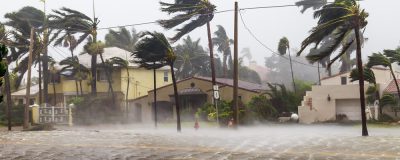Urban stormwater runoff is rainwater or snowmelt runoff that runs off the pavement, parking lots, rooftops and other impermeable surfaces in the cities. As the runoff travels to the lowest elevation, it carries with it dirt, trash, toxins and various pollutants – all the way into streams, lakes, rivers, estuaries, or oceans. This polluted runoff affects the water quality in the receiving bodies and causes significant damage to ecosystems.
Predictive models to estimate pollutant load
Pollutant build-up and wash-off differs across surfaces as these processes are influenced by factors such as surface material type, condition and age, as well as by rainfall characteristics such as intensity, event duration, and number of antecedent dry days.
As such, to guide the selection of efficient stormwater management options that can reduce the impact to water quality in receiving bodies, characterisation of the catchment and the untreated runoff quality both spatially and temporally is necessary. Such characterisation can then be used for estimating the pollutant load being generated from each surface under a range of rainfall conditions. However, current stormwater quality prediction systems typically generate annual load models that use unit area pollutant load factors or aggregate the contributing surface areas by land use. Such systems neither identify concentration changes over time nor enable targeting of ‘hotspot’ surfaces to assist with selecting appropriate management options as per surface characteristics.
The requirement for catchment managers is a spatial analysis and planning system which can identify critical source areas for pollutant load reduction, prioritise mitigation based on contaminant influence on in-stream ecological health, and provide mitigation options through best practice stormwater management systems. Let us explore these three steps in more detail.
Step 1: ‘Identification’ of critical source areas for pollutant load reduction
The first step in stormwater quality management is to characterise the catchment into individual surfaces – roofs, roads, carparks, pervious areas and green infrastructure. The managers should be able to determine the amount of contaminant load generated by each surface for every storm-event or annually. The corresponding in-stream contaminant concentration levels in the receiving waters should also be determined.
Step 2: ‘Prioritisation’ based on contaminant influence on in-stream ecological health
The second step in stormwater quality management is to prioritise the sub-catchments in the order of load reduction to improve water quality in the receiving environment. This can be achieved by determining the pollutant load distribution at sub-catchment scale. At sub-catchment level, it is also important to identify the frequency of threshold breaches of the in-stream contaminant concentration in a given year.
Step 3: ‘Mitigation’ through best-practice stormwater management systems
The third step in stormwater quality management is to have the option to develop several mitigation scenarios and select the best solution in terms of load reduction and water quality improvement. Solutions that come with a dedicated scenario generation option for users to compare outcomes depending on the type of mitigation measures applied would be useful.
The benefits of a web-based stormwater quality management system
Managing urban stormwater quality does not have to be a cumbersome affair. In collaboration with University of Canterbury, DHI has developed a GIS-based decision support system called ‘MEDUSA Online: Contaminant Loading On-Demand’. This system provides guidance to catchment managers and planners by identifying contaminant hotspots, rank sub-catchments based on their contaminant influence, and assist in the selection of appropriate source reduction and treatment options in the catchment.
It not only determines event-based pollutant loads and quantifies peak contaminant loadings quantified for every surface, event and discharge point but also aggregates individual surface and event results over time and space to support design of solutions from site scale to strategic planning scale.
A web-based stormwater quality management system such as this combines pollutant at-source model with flow routing models (for example, MIKE+) to relate catchment loads to in-stream concentrations. Built as an online web portal for ease of user interactivity anytime and anywhere, such a system lets users easily query the catchment load and in-stream concentration results and get immediate answers with just a few clicks on a tablet, smartphone, laptop or desktop. Several ‘what-if’ scenarios can be run in a fraction of time, and the web-based interface means that there is no need for users to install or maintain any special software on their computer or tablet.
Coping with rapid urbanisation and climate change
Meeting the needs of a growing population and dealing with the effects of climate change are major challenges facing water utilities today. Contact us to explore how you can safely and efficiently manage your city’s wastewater and stormwater systems with our innovative approach.








